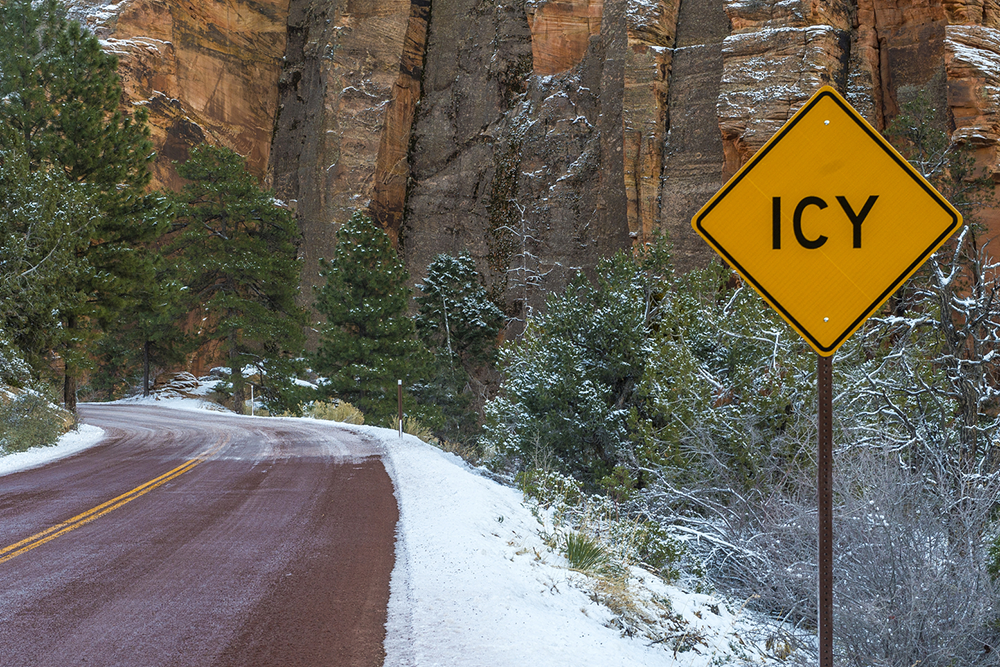What To Remember If You Encounter Black Ice

Panic might be the primary emotion while driving over a patch of black ice. Yet, safety experts agree reacting rashly can make matters worse.
"You're likely to be a bit rattled if you encounter black ice, but the general rule is to do as little as possible and allow the car to pass over the ice,” said Michael Muccilli, winter program coordinator for the National Oceanic and Atmospheric Administration. “Try to keep the steering wheel straight and take your foot off the accelerator completely, as slowing down gives you more control.”
Black ice is a glaze of ice caused by light freezing rain or by melting and refreezing of snow, water, or ice on a roadway. Though actually clear, the phenomenon is called “black ice” because it looks like the rest of the pavement on the road.
The ice forms no bubbles, making it particularly dangerous because it's hard to detect in advance. Black ice typically forms when temperatures fall below the freezing point (32 degrees fahrenheit, 0 degrees celsius), but can even form when air temperatures are above freezing if the ground is below freezing.
Muccilli also offered advice on if your vehicle starts to spin out.
“If you feel the back end of your vehicle starting to slide, make a gentle turn of the steering wheel in the same direction,” he said. “Steering against the skid can lead to a spinout.”
Though black ice is a common phenomenon in winter, it generally doesn’t cover massive swaths of roadway, he said.
“Usually black ice patches aren't longer than 20 feet, so you should be able to reach an area of more traction."
Here are some places black ice commonly occurs.
-
Underpasses - Shade provided by an overpass prevents direct sunlight from reaching the pavement, creating a surface temperature that's less than the surrounding area.
-
Low-lying areas. Dips in the road can collect moisture, which can turn to ice.
-
Shaded areas. That grove or orchard might look serene, but the shade it casts on the roadway can help ice crystalize.
-
Bridges and Overpasses - Signs reading “Bridge freezes before road” exist all over the country as a reminder that the surface of an elevated bridge doesn't retain heat the way a road set atop earth does.
Black ice forms most commonly at night or in the early morning hours. It may appear slightly glossy, possibly helping you detect it from the rest of the pavement.
In all winter driving scenarios, you should keep your speed slow when driving and turning, and keep a safe distance between your vehicle and the vehicle in front of you.
The National Weather Service offers these safety tips when encountering black ice:
-
Stay calm and avoid overreacting.
-
Do as little as possible to allow the vehicle to pass over the ice.
-
Take your foot off the accelerator.
-
Try to brake as little as possible, but if your car has an anti-lock braking system, press your foot firmly down on the brake. If your car doesn't have ABS, pump the brakes lightly. Applying the brakes too hard can cause you to spin out.
-
Keep the steering wheel straight.
-
If you feel the back end of your vehicle starting to slide, make a gentle turn of the steering wheel in the same direction. Steering against the skid can lead to a spinout.
-
Usually black ice patches are no longer than 20 feet